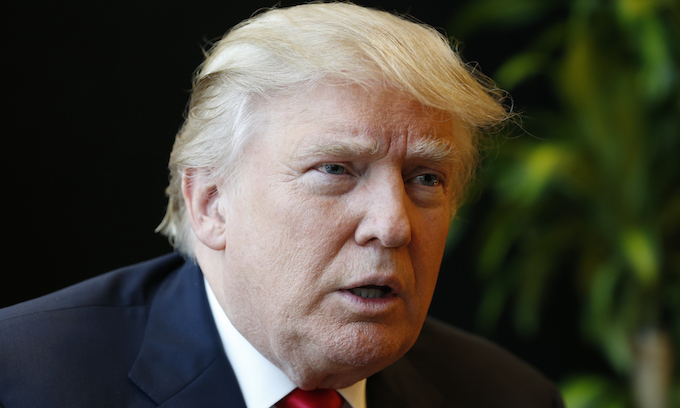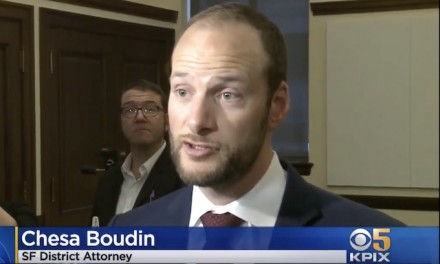Momentum is building inside the White House and among conservatives in Congress for a budgetary maneuver to cut government spending immediately.
Last week the White House floated the idea of cancelling funds in the $1.3 trillion omnibus budget bill. Groups like the House Freedom Caucus and some Republican leaders, including Kevin McCarthy of California, the House majority leader, have urged President Trump to use the rescission power to trim some of the wasteful spending totals. Sen. Rand Paul of Kentucky wants a 1 percent cut in all funds in the omnibus bill.
Republicans should welcome a high stakes budget showdown with congressional Democrats given the unpopularity of the omnibus bill passed last month. Mr. Trump has a potent tool at his disposal to cancel tens of billions of this spending — if he dares to use it.
A little history lesson is in order here. Every president from Thomas Jefferson to Richard Nixon routinely impounded federal funds, blocking federal agencies and departments from spending certain dollars appropriated to them by Congress. FDR canceled massive domestic spending after the bombing of Pearl Harbor and America’s entry into World War II, when every available dollar had to be devoted to the military.
No modern president used this authority more aggressively than Mr. Nixon who, according to a 1974 study, impounded upwards of 20 percent of controllable funds appropriated by Congress every year of his presidency.
Congress viewed Mr. Nixon’s impoundments as a threat to its constitutionally-granted power of the purse and so it passed the Congressional Budget and Impoundment Control Act of 1974. Although this formally blocked the president from unilaterally impounding funds, it did create “rescission” authority.
Here’s how it works: The president submits a proposal to cancel unnecessary funds. Both chambers of Congress must affirmatively agree to the proposal within 45 days, otherwise the funds must be spent as appropriated. Because rescission requires affirmative consent from Congress, the House or Senate can ignore the request without a vote.
Ronald Reagan, used rescissions to save billions of dollars. The chart shows how many rescissions were proposed and passed by each president. Over his eight years in office, Mr. Reagan proposed 596 rescissions totaling $43 billion. Congress ultimately approved 213 of Mr. Reagan’s rescissions for a savings of $16 billion — or roughly $34 billion in today’s dollars.
Sadly, in the years since Mr. Reagan left office, Congress has approved less than $6 billion in additional rescissions. According to the Goverment Accountability Office, no president has submitted a rescission proposal since fiscal year 2000, and Congress hasn’t approved one since fiscal year 1999.
Mr. Trump should revive the rescission process by working with Senate Majority Leader Mitch McConnell and Speaker Paul Ryan to develop a spending reduction package targeting particularly egregious federal spending.
The beauty of this approach is that Senate Minority Leader Chuck Schumer, who demanded all this extra spending, would not be able to stop a rescission so long as Republicans stand together. Our research on the fine print of the law shows that the Congressional Budget and Impoundment Control Act of 1974 limits debate in the Senate, “on any rescission bill or impoundment resolution, and all amendments thereto (in the case of a rescission bill) and debatable motions and appeals in connection therewith, shall be limited to not more than 10 hours.”
This means that Mr. Schumer and the Democrats can delay a vote on a rescission, but they can’t prevent it. At some point the debate ends and the Senate can approve the rescission with 51 votes. That’s how many votes Republicans now have.
But here’s the rub. Would Republicans stick together? Some Senate Republican appropriators are nervous about revisiting the budget — ugly as it is — and Mr. Schumer is screaming that this would break the budget deal they reached earlier this year with Mr. Trump.
But given the tens of billions of excessive spending in this budget, the GOP would clearly have the upper hand in this dispute in terms of public opinion.
This would also set up an excruciatingly tough vote for vulnerable Senate Democrats in West Virginia, Indiana, Montana and North Dakota — all of whom tell their voters they are fiscal conservative debt hawks. Well, we will see.
For Mr. Trump to win here, he would have to do what Mr. Reagan did: Take is case for fiscal solvency directly to the American people. There’s little downside in running against the spend-aholics in Congress. If the big spenders in Congress vote to save the pork and the waste, he makes an even stronger case to the American people why the president must have a line item veto.
• Stephen Moore, a columnist for The Washington times, is a senior fellow at the Heritage Foundation. He was a senior economic adviser to Donald Trump during the 2016 campaign. James Carter was the head of tax policy implementation on President Trump’s transition team.
© Copyright (c) 2018 News World Communications, Inc.
—-
This content is published through a licensing agreement with Acquire Media using its NewsEdge technology.




















Recent Comments